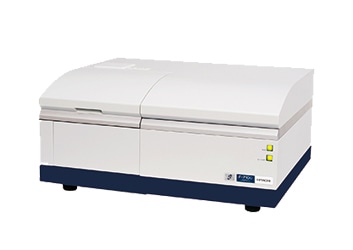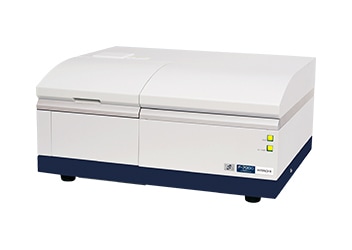EEM Application Overview
Hitachi’s superior fluorescence technology supports fluorescence fingerprint analysis, a topic of discussion in recent years which can be applied to a wide range of applications from the cutting edge research to quality control.
The fluorescence fingerprint (3D-fluorescence pattern; Excitation Emission Matrix, EEM) of a sample’s characteristic fluorescence is expected to have applications in the classification of food, chemicals, drug raw materials, differentiation of production regions and origins, estimations of harmful substances, classification of good and defective products, and quality verification of manufacturing processes.
Example
Example 1: Classification of tea by fluorescence fingerprint analysis
(principal component analysis)
300 µL of each tea is added dropwise into a microplate, and the fluorescence fingerprint is automatically measured by the EEM Multi system. The fluorescence of each sample is ascertained.
Principal component analysis was applied to the fluorescence fingerprints, being able to distinguish the change at each tea production stage.
This technique is useful when controlling processes, discriminating between similar products, and interpreting measurement data.



Example 2: Olive oil grade discrimination (discriminant analysis)
There are cases in which ordinary olive oil is falsely labeled and sold as highest-grade extra virgin oil. From the olive oil, the fluorescence fingerprints stemming from peroxide (red box) and stemming from chlorophyll (blue box) were ascertained.
The olive oils can be distinguished by multivariate analysis of the intensity distributions.

More Fluorescence Fingerprint applications:
Products supporting this application
Contact us for more details.


